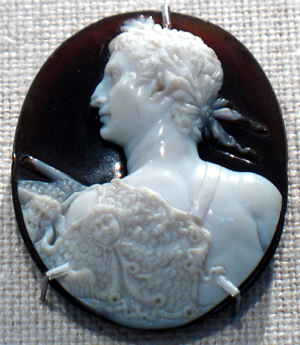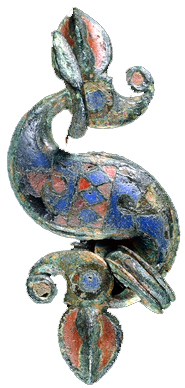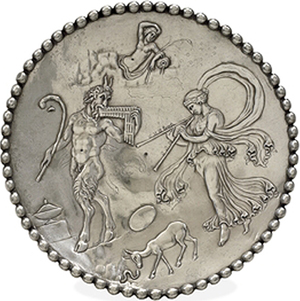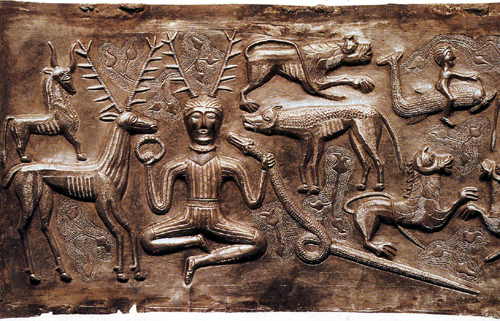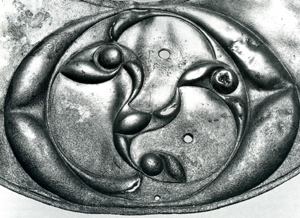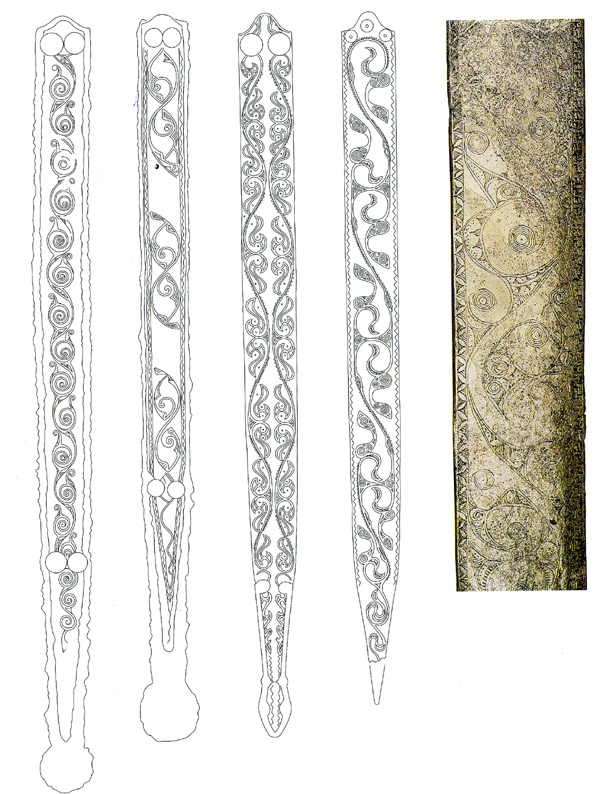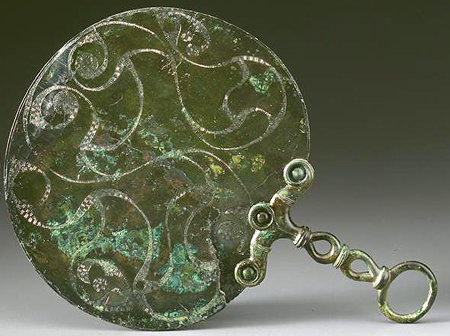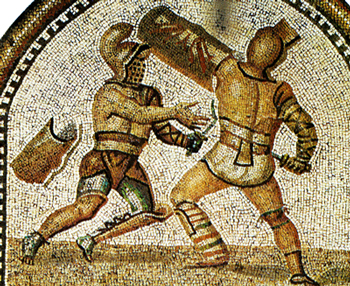|
Roman and Celtic Art - what's the difference?
The Romans and Celts lived around the same same time, a few centuries before and after Christ, and both were very skilled at creating works of art like statues, jewellery, weapons and armour, and every day objects like mirrors and coins.
The difference between Roman and Celtic art is not really about what sort of objects they made. Both carved statues and reliefs, both made helmets, swords, shields, tools, household objects, pottery, silverware, jewellery, and so on.
The Romans did make mosaics and painted pictures on walls, which as far as we know the Celts did not. But both the Romans and Celts tried to make ordinary objects not just simple and functional, but beautiful in their own ways. For example, a shield would have designs or patterns on it, as would a mirror or a vase.
The difference is also not about what materials the Romans and Celts used to make these things. Both used metals like bronze, silver, iron, and gold, as well as stone, pottery, glass, wood, and bone.
The difference is about style. Ancient art styles changed through the centuries, as they have in our modern times. Roman art of the 4th century BC is different from Roman art of the 4th century AD, and the same is true of the Celts. Even so, the differences between the two cultures can be seen throughout this long period.
On this page you will find some examples of Roman and Celtic art, and some thoughts about what the difference is between their artistic styles.
Above - a modern copy of a Roman shield. Can you tell what the design is supposed to be? There are 4 eagle's wings, and 6 arrows which form a thunderbolt.
|
Above: Roman cameo brooch showing Emperor Augustus. Below: Celtic dragonesque brooch.
Which is more realistic? The Celtic brooch is quite abstract - it isn't totally clear what creature the brooch is supposed to be in the shape of.
|
|
Above: the Wandsworth shield - a Celtic bronze shield boss shaped by repoussť method (hammering into the bronze to raise parts up). What forms do you see? Some people see leaves, others see birds' heads. Some parts seem completely abstract - they don't look like anything real at all.
|
|
|
Silver dish from the Mildenhall Treasure, Roman, 4th century AD. This is a realistic style - the figures are shown just as they might appear if you saw them (a lady playing the flute, the god Pan, a deer, a lady above). The muscles, other body parts, and clothes are shown accurately and clearly. |
Silver plate, Celtic, showing the god Cernunnos. Here the images are not abstract, because you can tell what you are looking at - a man with antlers in the middle, holding a torc and a snake, as well as a deer, dogs (?), and a boy riding as dolphin. But how realistic is the style? Look at how the god's arms and legs bend. They are almost like a cartoon. |
|
The Celtic Style
The Roman style is fairly clear - it is realistic, and is mostly based on Greek styles of art. It features people and gods especially, but also animals and plants. Celtic art is more difficult to describe. It is part way between realistic and abstract. Real things are often shown but it is sometimes very hard to tell what the real thing is. Certain shapes do seem quite common, though. You can see examples in these pictures here.
Circles, spirals and scrolls are common. Also curling 'S' shapes, and what are called trumpet shapes. There are lots of curvy triangular 'leaf' shapes, and almonds, too. Often shapes and lines are connected to each other in complicated ways, making an overall pattern that has many parts, but which feels balanced. There are shapes and patterns within shapes too. Often there are three parts to a pattern, but not always.
Some historians have seen real things in all these abstract patterns - birds' heads in the Wandsworth shield, for example, or faces in mirrors. Unfortunately the Celts did not have their own writing, and no one wrote down an explanation of what all the shapes, scrolls, and patterns meant. So we can only guess. What do you think?
The end of a torque, showing a three-part pattern.
Bronze plaque with three lobes, and with circles, almonds, and curving leaf shapes. |
Patterns on sword scabbards, drawn to show them clearly. On the right is an actual sword scabbard.
The Chesterford mirror - can you see a grinning face on the left? |
|
The Roman Style
Contrast this with the style of the Romans. The Roman style seems much more ordered, rational, logical, and of course realistic. They wanted to show the beauty of the world as it really is. Like the Greeks, they thought human forms were pleasing as they were and tried to capture them accurately. This is an immensely difficult thing to do, and you could argue that the Roman artists were more skilled than the Celtic artists.
Not everyone would say that, however, and nowadays a lot of people prefer Celtic art to Roman or Greek. Classical art (Roman and Greek) became very popular in the Renaissance and afterwards (about 1500 to 1900), but nowadays it is seen by many people as old fashioned. Modern art does not try to be realistic - it's been done. And with photography, you can get a realistic image of something very easily.
What do you think? Do you prefer Roman or Celtic art, and why?
Mosaic showing gladiators |
Carving from the ara pacis, a shrine built in the time of Augustus in Rome
The Corbridge lanx, a silver tray showing Roman/Greek gods at the shrine of Apollo. |

